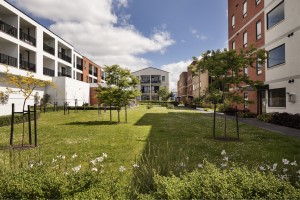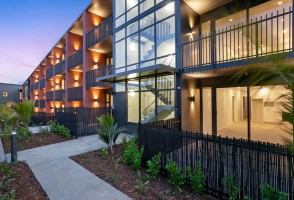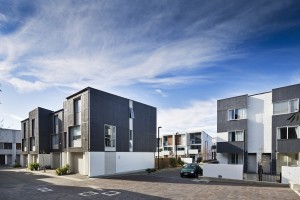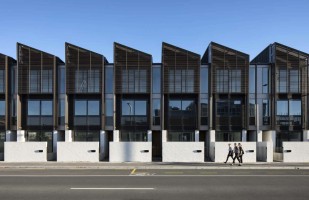This book is a source of technical and background information for all those who have an interest in developing, designing, constructing and managing medium density housing in New Zealand.
Medium density housing is a departure from the stand-alone house on its individual site which is the most common housing type in New Zealand suburbs. Medium density housing is where several houses are grouped together and often joined together on one site. The definition typically includes townhouses, terraced houses, and apartment buildings up to six storeys. It may also include houses or apartments in mixed-use developments such as in shopping centres or transport hubs.
This book is timely because there have been recent changes to New Zealand planning legislation to encourage developments at increased residential densities in towns and cities from one house per section to three houses per section and up to three storeys high.
For the last 20 years or so, medium density housing has been a topic of discussion, advocacy and research in central and local government, design professions and research institutions. With increases in population, increasing housing density is a way to curtail urban sprawl and suburban developments on valuable agricultural land. From urban planning and quality of life perspectives, medium density housing provides a number of benefits. Building an increased number of houses on existing sections means that new household units can be located in established urban areas that are well served by public transport, schools, shops, medical services and other amenities. Building medium density housing in new subdivisions also makes more efficient use of land than stand-alone houses, and reduces the amount of roading and piped infrastructure required to service them.
Medium density housing must be carefully designed and well-constructed to ensure occupants have visual and acoustic privacy inside and outside their homes, with good security and surveillance of shared and common spaces. Fire and acoustic separation between houses is especially important and these aspects, along with construction requirements for heating, ventilation, durability and weathertightness are well covered by the New Zealand Building Code.
If well designed and built, medium density housing can provide its occupants with enhanced amenity and lifestyle opportunities (less time spent commuting and mowing lawns), and will result in more sustainable urban environments. This book will show you some good examples of medium density housing and guide you on how to do it well.
Duncan Joiner
PhD (London) BArch(Hons)(Auckland)
former Chief Architect for MBIE
former Professor of Design at Massey University



